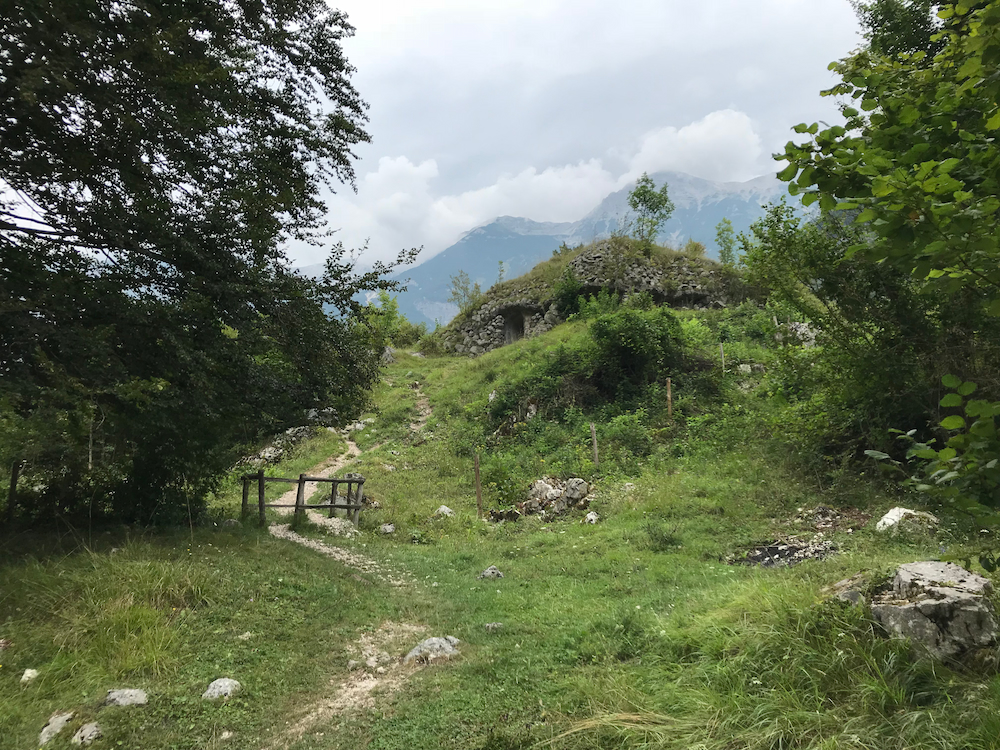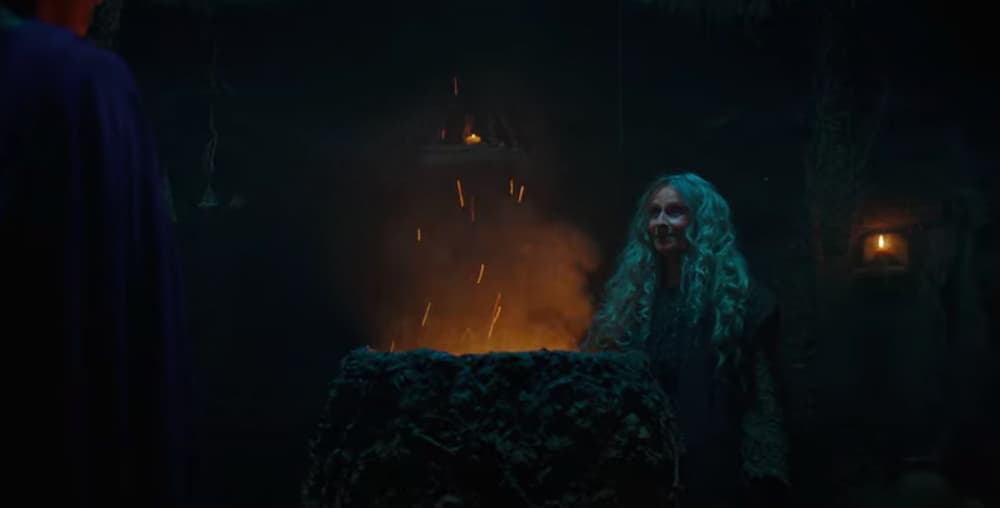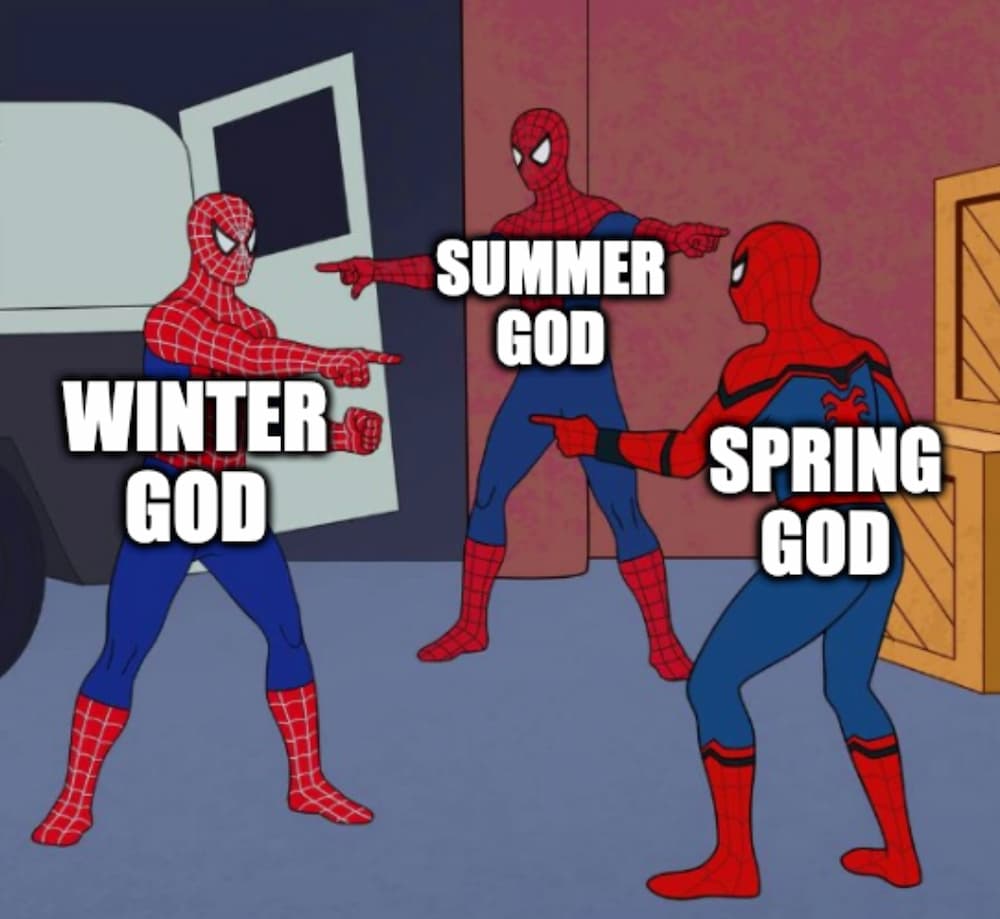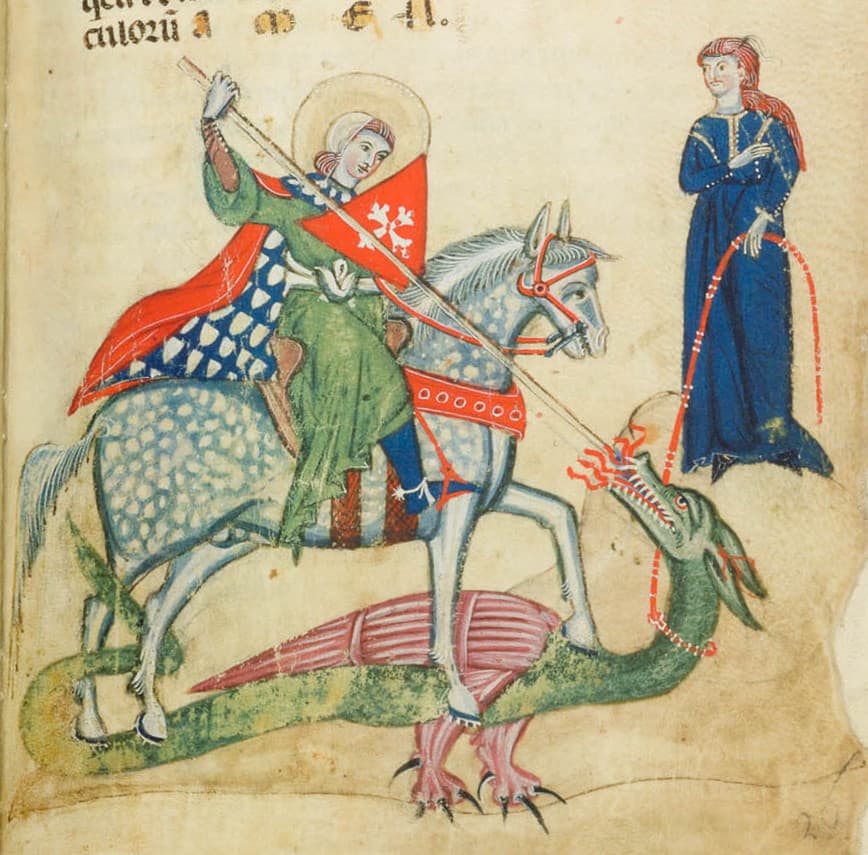Get Lucky #
Either I’m very lucky, or I keep finding evidence that everything is connected. After Rites of Passage, I’ve been reading one of my Christmas presents: the very recent Woodruff’s Guide to Slavic Deities. I confess that when I discovered it was printed by Amazon, after flipping through the pages, at first I had some prejudices. I thought it was mainly a sort of list, maybe a catalogue… oh boy, I was so wrong!
The text is full of interesting notions and –what I look for most– connections among civilisations. In brief, by studying the roots of names (often Proto-Indo-European), very interesting details can be discovered. Especially in countries like the Slavic ones, close each other, some small differences of pronunciation can help to find new details.

A photo I took in Slovenia. The “magical” atmosphere is quite powerful!
One of the main aspects discussed by this book concerns the polyvalence of the gods. There are no such distinct categories as “god for fertility”, “god of war”, etc. Each god has a female goddess counterpart, which can be seen as his partner, his daughter or, more simply, another form of the god itself. Of course, there isn’t one Slavic culture – there are dozens! So confusion is inevitable among names and roles.
But mostly, more interestingly, the concept of polyvalence regards mutation: in the time span of a solar year, a Spring god would transform in a Summer god, and the latter would transform then in a Winter god. At the beginning of the year1, the Spring god will be born again from the Winter one. In ancient times, resurrection was much more “common” than in the last two millennia.
Winter Nightmares #
Let’s get down to business curiosities. One of the main Slavic deities is Mora, which is defined a “dark goddess” because she’s related to the dim part of the year, the Winter and its long nights. In the death/life cycle, Winter would be death with no doubt. She was depicted mainly in two ways: as a beautiful, pale young woman with dark hair, or as an old woman dressed in white. Haven’t we already seen this figure somewhere else?
Mora is also known as a “dream goddess”. Why, though? Well, from her name probably derive mares, spirits that give night_mares_ to sleeping people. In addition, another animal which she is linked to is the moth, which represents the soul flying out the body while we are asleep.

“Wodan’s Wild Hunt” by Friedrich W. Heine. A procession of angry spirits riding across the sky. No wonder it was considered a bad presage.
Another interesting association comes from German language: Mohr or Mahri were “riders of the storm”, spirits that rode among the clouds in winter nights. They can be easily linked to the Wild Hunt, a myth that was spread across whole Europe. Final note: one of the other names is Pethra Baba and her worshippers/followers were called pethra… doesn’t it sound like perchta?
So, we were able to link three topics already discussed in these pages with just one2 Slavic deity. Not bad!
Baba Yaga #
Maybe the most popular figure of the Slavic pantheon is Baba Yaga, which is described as a terrible, malignant crone. She recently appeared in Netflix’s Witcher adaptation with a fictional name, but the character has many of her features: she is an evil witch and she lives in a cottage that stands on fowl’s legs – probably her best known detail. A little spoiler about the season finale: when she gets free, she even flies to ride with the Wild Hunt!

Her name was “Voleth Meir”, but she’s clearly Baba Yaga. Fun fact: the name means “Immortal Mother” – immortal as her male counterpart!
Baba Yaga’s temperament hasn’t always been so much negative: as I mentioned earlier, when life was intended more as a cycle of life and death, Winter deities had also great regenerating powers because, from them, life sprang anew. In later centuries, when life became conceived as “linear” (birth -> death), then the witch was seen as “purely evil”. So, even an ugly crone who was said to fly around in an iron mortar, propelling it with a pestel, was originally not feared, but respected.
In fact, she was a harsh “bringer of justice”. Her motto could have been: you don’t disrespect nature or magic without consequences. She was also a spinning goddess, which was a very common figure among cultures because it was said the god(desse)s weaved people’s fate. And finally, as many other goddesses, she had a male counterpart: Koshchei.
Birds and Snakes #
He was known as the deathless. We already talked about him referencing his soul hidden outside the body, so that the owner is immortal until the –fragile– object that contains it is destroyed. As we noticed, it was often an egg. Reading this book, I found a very interesting link: in the stories, the egg was contained in a duck, or a dove – it was always a white bird.
White birds (mostly swans, doves, and ducks) are linked to Siva, the Summer deity known as the “Bird Goddess”. Her name literally means “life” and she represents the blossoming of nature during summertime. She’s connected to the constellation of the Cygnus and the planet Venus (the homonymous Roman goddess was very similar to Siva). In some parts of Russia, it was forbidden to shoot swans because they were related to the fairy world.
Siva was also linked to snakes. It gets fascinating because it was said that white serpents could fly like birds. Also, by eating or licking a snake, a person would get the ability to understand the language of birds. The image of the winged snake could have easily evolved into the winged dragon – remember that in Medieval times dragons were often depicted with extremely long bodies that could envelop a hill.

The zalkis, linked to Mora. It looks like a snake and the infinite symbol, resembling resurrection.
Other than that, going back to the goddess Mora, one of her symbols was the zalkis (see picture above). It resembles both a snake and the infinite loop. According to its description on Latvians.com:
[…] Māra’s sign. Wisdom and knowledge. The changeable. Energy of life and renewal. The waxing and waning of the moon. Latvians believed that catching and eating the zalktis would allow them to commune with their ancestors, to understand the speech of ancient tongues.
Now, last question: what is called zalktis in Latvian? The Grass snake, obviously. This is one of the many connections that link different cultures and show how apparently different pagan deities were associated. Some of them come from a remote past3 while, in comparison, other ones are very recent. Many, though, resisted up to present day thanks to scholars and… Christian Saints.

Actual situation of Slavic deities during festivities.
Can’t Befriend Someone? Absorb It. #
While it may seem a paradox, it is well known that Christianity just made up many of its Saints’ stories. Since many cultures across Europe and up to Asia had to be “converted” into Christianity, their pagan gods and traditions were simply absorbed and mutated in Saints. Temples and holy places were turned into churches. Even the sacred days of the original gods were preserved to avoid altering the heritage.
Some examples: St. George could be Jūrgis, one of Auseklis’s names, or Jarilo – they both were Slavic Spring gods. George’s days is 23rd of April or the 6th of May, according to the versions, and they correspond to pagan festivities. St. Ursula (21st of October) may be related to celebrations of Siva’s transformation in her winter form. The pagan goddess is also related with the Ursa Major constellation (Great Bear), which could have become the Saint’s name.

St. George is often depicted while fighting a dragon… but I hope nobody really thinks he actually fought that animal. I may exaggerate when asking if he actually existed – or I may not.
These may seem overstatements, but it’s easy to go on. One last case: St. Gertrude’s sacred animals are mice and cats. The Saint seems related to Mora again: mice live underground (remember that she is a Winter goddess, therefore related to the Underworld and death); cats have always been linked to witches. And, as I already pointed out, Freya’s chariot was pulled by two cats, so this aspect could connect Christianity with both Norse and Slavic pantheons.
-
Through time, many calendars have been used. At some point, the end of the year also matched the Spring equinox (the actual March). ↩︎
-
That is probably wrong. Deities’ roles often exchanged across cultures, so in this case maybe it was not everything linked to Mora… but surely to a figure (or figures) with those features. ↩︎
-
Some depictions of what looks like a “Bird Goddess” are about 30,000 years old! ↩︎